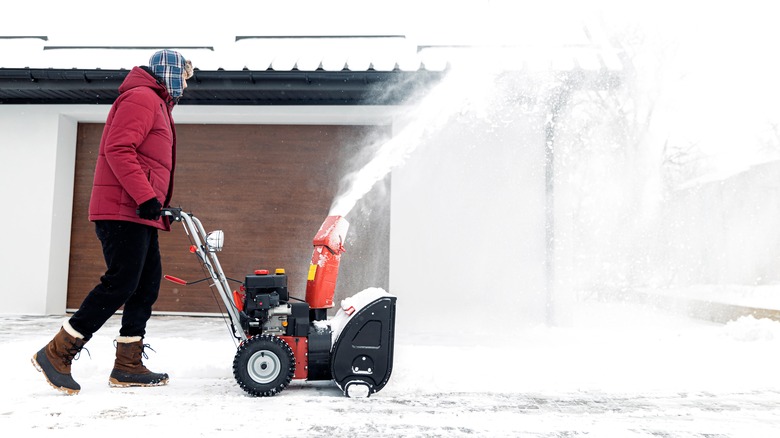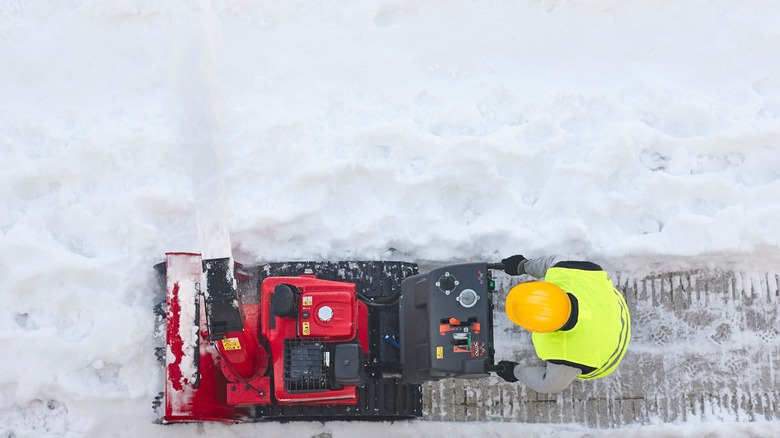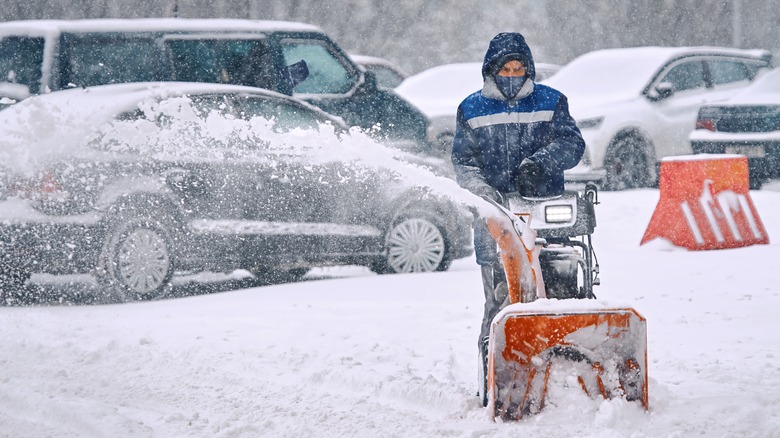Don't Make These Common Mistakes With Your Snowblower
Snowblowers can be a basic tool or a highly technical piece of apparatus — either way, the machine draws snow in through the bottom, with the help of an auger, and then throws the collected snow to your target area, notes Cub Cadet.
Snowblowers make clearing the snow around your home easier than shoveling. Dealing with large volumes of snow can be arduous, time-consuming, and often hazardous. A snowblower makes this process significantly quicker and less dangerous, meaning you can spend more time doing the things you love.
Cub Cadet also notes that all snowblowers — regardless of whether it's a one, two, or three-stage model — should be tested without snow to ensure their proper function. You can start the device on your driveway and flip through auger, chute, and impeller controls to ensure correct function before tackling the snow buildup around your home or lawn. However, there are some common mistakes that you will want to avoid.
Clean out the snowblower before putting it away
Allowing snow to remain inside the body of the unit can spell disaster in the future, explains Realtor.com. While these devices are built for durability and sustained use in harsh conditions, they aren't bulletproof, so caring for your snowblower is of the utmost importance. According to Eric Halfman, market manager at John Deere, Realtor.com details one of the most important steps in proper snowblower care. "Snow left in these areas of the machine can freeze solid and prevent the snowblower from operating properly at the next startup," and "this can cause damage to the machine's internal parts," says Halfman.
As with any other piece of equipment that you use regularly, removing debris and other foreign elements after use is critical to preserving the device itself. Water expands when it freezes, and this can severely impact your snowblower if enough volume is left inside the machine. Liquid buildup inside your snowblower can degrade the metal parts and can cause damage if allowed to freeze completely.
Review the owner's manual before use
Another key mistake that many homeowners make is not reading the instruction manual. In conversation with Eric Halfman, Realtor.com notes, "read your operator's manual thoroughly before operating your snowblower, reviewing it as you get ready to start a new season is also a good idea." This is particularly useful advice for those who have recently purchased their first machine or a new model to replace an older snowblower.
Briggs & Stratton reports that your owner's manual, and any additional documentation, will also give you clear guidance on things like how often to add oil (and what type your unit requires,) when and how to inspect the internal components, and the frequency of spark plug replacement needs. Without this essential knowledge, you may find that when you next come to use your snowblower it is wont function correctly, or even worse, it needs replacing altogether.


